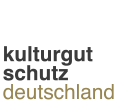Assurance that a cultural object will not be entered into a directory
In addition to the legally binding commitment to return cultural property, the German Act on the Protection of Cultural Property (Kulturgutschutzgesetz, KGSG) puts in place certain other mechanisms to facilitate cross-border loans from other countries to German institutions responsible for preserving cultural property.
The debates that took place in connection with the reforms introduced by the Act on the Protection of Cultural Property led certain collectors to fear that the loan of their works to Germany might trigger proceedings aimed at the entry of these works into a directory of nationally valuable cultural property, which would ultimately mean that they could not be removed from the country.
As explained above, fears of this kind are unfounded, not least as a result of the strict criteria for entry imposed by Section 7 KGSG. No instances of this kind have occurred over the past few decades, and the current legal situation provides no reason to think that this might change.
Assurance that a cultural object will not be entered into a directory
Nevertheless, the legislator decided that parties who are based in other countries (i.e. who do not merely have a temporary place of residence or registered office abroad) and who loan cultural objects to Germany should be permitted, for the duration of the loan agreement with the relevant German museum, to obtain written assurance from the authority of the Land in question with jurisdiction for cultural matters that the cultural object will not be entered into a directory as “nationally valuable cultural property” (Section 10 (7) KGSG). In certain individual circumstances, owners regard this level of legal certainty as a requirement that must be met before the loan can go ahead.
Period of validity
Although the Act on the Protection of Cultural Property does not stipulate a time limit for loans of this kind, and the period of validity of any such assurance can therefore be freely determined, this period will continue until six months after the end of the loan agreement so that the cultural object can be transported back to the relevant country in an orderly fashion, paying due account to any individual conservation-related or safety requirements.
The Act on the Protection of Cultural Property excludes from these rules cultural objects loaned by a party based abroad that were already in Germany upon the entry into force of the Act (6 August 2016).
Absence of an export licence requirement
The assurance means that a licence is not required to export the cultural object into the EU internal market once the loan agreement with the German institution responsible for preserving cultural property has expired.
The nature of the loan means that exports to third countries outside the EU (USA, Switzerland, etc.) are also exempt from the scope of Regulation (EC) No 116/2009 on exports of cultural goods.
Distinction from a legally binding commitment to return cultural property
By way of contrast to a legally binding commitment to return cultural property, an assurance is not subject to a time limit, which renders it particularly suitable for long-term loans. The provisions of the Act on the Protection of Cultural Property make it clear that even cultural objects that remain in Germany for extended periods will not have a special status conferred upon them in respect of Germany’s cultural heritage if they have been brought to Germany from another country solely on the basis of a loan agreement.
Unlike a legally binding commitment to return cultural property, however, an assurance of this kind does not protect the owner against third-party claims, since it is impossible to rule out legal recourse for the duration of the loan agreement (which may last for many years). This ultimately means that comprehensive protection for short-term loans can be obtained by means of a legally binding commitment to return cultural property, whereas protection for long-term loans should be obtained by means of an assurance, either as an alternative to such a commitment or, where necessary, as a follow-up measure.
Regulations on the return of cultural objects formerly located in Germany
Cultural objects that meet the strict criteria of Section 7 KGSG must be entered into a directory of nationally valuable cultural property. The Act on the Protection of Cultural Property does not grant the supreme Land authorities with jurisdiction for cultural matters any discretion in this respect. Section 10 (1) KGSG permits departures from this principle if cultural objects that are regarded as nationally valuable in Germany and that are returning to Germany after an extended period abroad are to be made available for public exhibition. The Act waives the obligation to enter the cultural object into a directory of nationally valuable cultural property if the following special requirements are met. The cultural object in question must have been abroad for a period of at least five years prior to the entry into force of the Act on the Protection of Cultural Property on 6 August 2016, and it must be made available for public exhibition or for research purposes within the territory of Germany for a period of at least five years. Applications are submitted to the competent supreme Land authority by the institution within Germany that wishes to make the work available.

